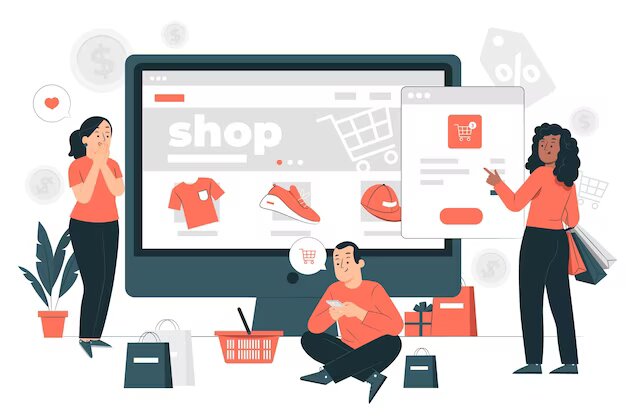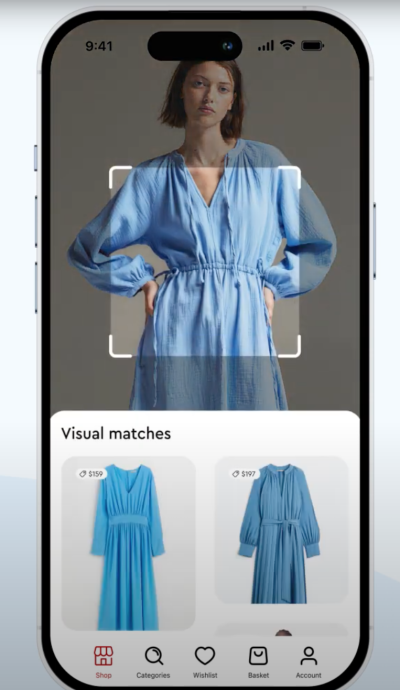E-commerce players across the globe are reaping tangible benefits by offering visual search to their customers
New Delhi: AI-powered visual searches have gained immense popularity in the e-commerce sector. ViSenze, a Singapore-based AI-powered visual search and recommendation platform, processed over 175 million visual searches in India in October, a 30% increase as compared to 2022.

Currently, Visual search has become the go-to option for faster and more accurate product discovery because of the ease of use it offers. Gurgaon-based Data Bridge Market Research projects that the visual search market will surge to $32,983 million by 2028, as shoppers won’t be impeded by language or spelling issues, thanks to visual search.
Visual Search in Retail
According to the data from ViSenze, Over 83% of the image searches are from screenshots, underlining the influence that social media has on the modern shopper, with the remaining searches initiated through the camera lens. Online shoppers also use image search to compare prices across platforms as it’s the fastest way to shop for the best deal.
AI-powered Visual Search helps retailers increase their revenue as it helps customers get up to 99% accurate results with image search.
Furthermore, it has also resulted in an increase of 24% in conversion rate with a 15% hike in engagement rate and up to 29 times return on investment (ROI), stated ViSenze’s official website.

ViSenze’s data also shows that a large portion of the visual search queries are from tier 2 and tier 3 Indian cities indicating that a lot of new-to-ecommerce customers prefer visual search to the traditional keyword-based text search. This number is only going to grow as more consumers come online in the coming years.
“Indian internet users spend 44% of their time on social media, which is the highest in the world,” said Oliver Tan, CEO, ViSenze.
“They also use 8.7 social platforms on average. This means that their shopping inspiration often happens on social media. This is one reason why visual search is so important in India,” added Tan.
Different brands like Myntra, Rakuten, Amazon, Levis, and Adidas facilitate the shopping experience with the use of visual searches.
Here’s a look at some of the brands that have seen progressive results in their growth
FNP
For Indian gifting brands, FNP (formerly Ferns n Petals), visual searches have proven to be highly beneficial, especially in cases where users may not recall the complex names of gifting products, for example, a bouquet of Anthurium or a Pampas and Dried Flower Bouquet.
According to the company, it is dependent on Google for image searches, but it plans to enable searches on its platform in the future. Festivals like Rakhi, Diwali, and Valentine’s Day record increases in visual searches with flowers and home decor being the most searched products. FNP also envisions visual searches playing an increasingly pivotal role in the specialized retail sector.
“By enabling users to search with images, we’ve enhanced the discovery process, making it more intuitive and enjoyable,” the company’s Head of Product Management, Chirantan Sharma said.
“We have observed a higher adoption rate among users aged 20 – 35 and anticipate even more sophisticated visual search capabilities, providing users with highly accurate and personalized recommendations,” added Sharma.
Amazon
The e-commerce giant introduced Shop the Look, a web-scale fashion and home product visual search system in 2022, a company publication stated.
In 2019, the company launched the StyleSnap service for fashion products, and in 2020 it expanded the service to support home product searches. In the year 2022, it renamed it to Shop the Look.
The feature aims at leveraging image data from the Amazon product catalogue and adopting effective strategies to reduce the human effort required to annotate data.
Shop the Look has shown a great impact on customers and the number of monthly active users (MAU) of Shop the Look in 2021 has increased by 250%.
“We recently added a new feature to our visual search tool that enables you to add text to your visual search queries,” Llew Mason, Vice President, Shopping said recently on the company blog.
“When you perform a visual search, you’ll see the search bar with the thumbnail of the image you captured, along with a prompt (“+ Add text”) to add any text to help narrow your search results,” added Mason.
Myntra
According to a Visenze case study of the e-commerce platform Myntra, the fashion marketplace’s image search traffic has grown by 35% over the last 12 months contributing significantly to conversions and revenue per user.
With the help of visual searches, Myntra was able to cater to Gen Z users with speed, accuracy and scale in areas of product search.
Myntra uses ViSenze’s Discovery Suite to power its ‘View Similar’ carousel to curate a collection of similar items based on visual attributes like the style or colour of the item end-users are looking at.
This also supports better conversion when certain products are out of stock, increasing revenue per user.
Showpo
Australian fashion retailer Showpo uses shop the look recommendations from Visenze which makes any model image instantly shoppable by processing all of the products displayed automatically.
Users can easily find the other items in the picture and include them in the basket, increasing average order value (AOV) and revenue.
This helped the company curate a collection of similar items and ensured the right items were being shown to the right visitors to achieve a 10% increase in conversion rates.
Zalora
Fashion and lifestyle platform Zalora was able to get a 10% higher engagement rate than before and increase the average order value by 15%, as per Visenze data.
The ease of finding the right product also led to reduced customer churn, increased click-through rates, and ultimately more revenue.
“We want to give our customers joy in shopping by just taking a photo of any fashion objects that grab their attention,” said Karthik Subramanian, CTO, Zalora Group in a Visenze case study.
More insightful and stimulating conversations on technology trends in retail are expected at the Phygital Retail Convention (PRC) 2024.


